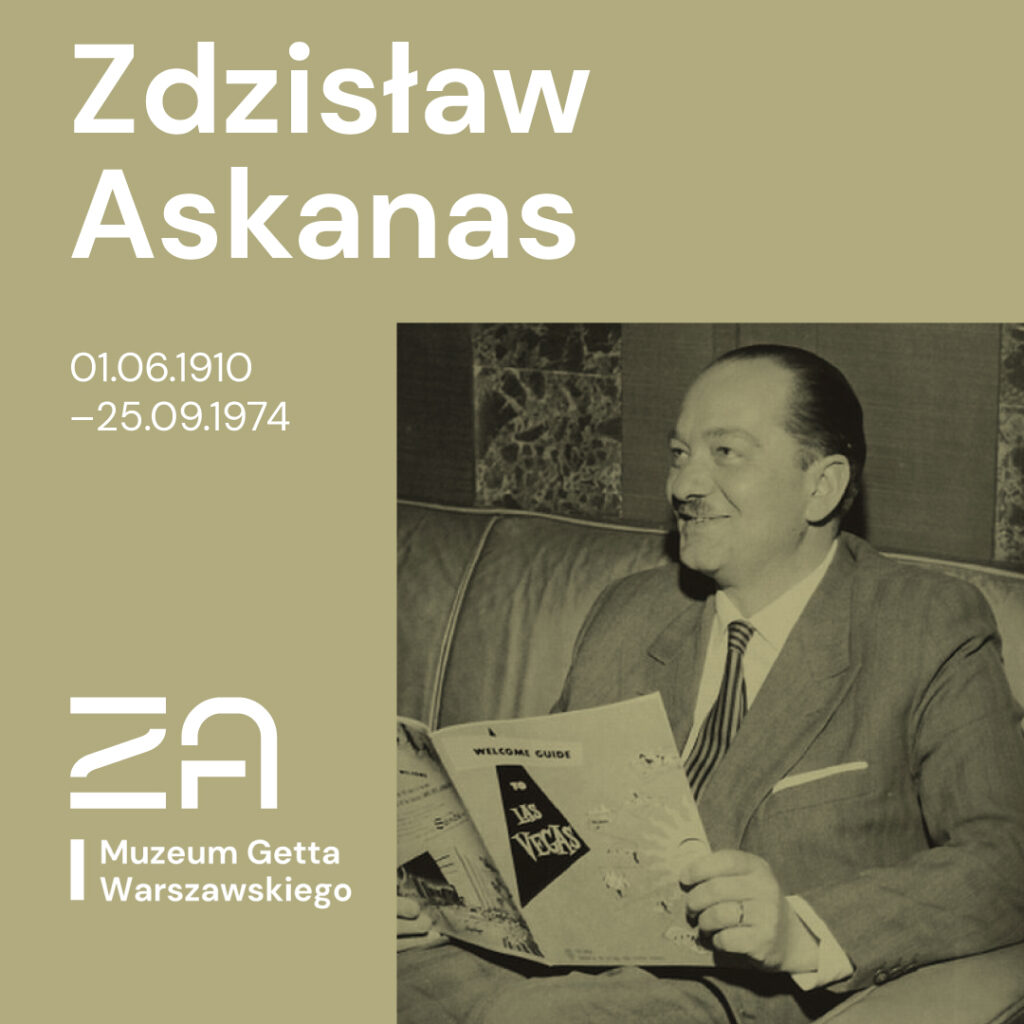Zdzisław Askanas (01.06.1910–25.09.1974)
cardiologist, professor of medical sciences, founder of the Warsaw Academic School of Cardiology; defender of the Modlin Fortress, underground activist, participant in the Warsaw Uprising

He was born on June 1, 1910, into the family of a Warsaw pharmacist. Before graduating from high school, he earned a living as a pianist in Warsaw cafés. During his studies he was a victim of the bank ghetto. He obtained his medical diploma in 1935 and began working in the 2nd department and clinic of Internal Diseases of St. Łazarz under the direction of Prof. Mściwoj Semerau-Siemianowski. On 1 January 1938 he was promoted to the rank of lieutenant.
During the September campaign he took part in the defense of Modlin Fortress, for which he was awarded. Cross of Valor. Soon after, he was relocated to the Warsaw Ghetto with his wife Alicja (later an assistant professor of pediatrics) and son Aleksander (later a pioneer of echocardiology in Poland). The family survived the so-called Great Liquidation Operation and escaped to the so-called Aryan side of Warsaw shortly before the outbreak of the uprising in the ghetto, hidden under a transport of rags by a bribed Wehrmacht soldier. After his escape, Askanas took the surname Jan Dębowski and began to work in the underground. He participated in the Warsaw Uprising as a doctor for the so-called “Reducie Kaliska” (resistance point at the intersection of Grójecka and Kaliska Streets). He left Warsaw with the civilian population and ended up in the transit camp Dulag 121 in Pruszków, from which he escaped. Together with his wife he founded a hospital in Łuszczewo, where he cared for civilians, insurgents and partisans.
After the war he continued his research and medical practice – he began working in a state clinic (1948), defended his doctoral thesis (1950) and post-doctoral qualification (1951), received the title of professor (1954) and became the first national consultant in cardiology. He initiated the establishment of special intensive care units and the introduction of resuscitation ambulances. In 1967 he published the first textbook of cardiac resuscitation. He died as a result of a severe stroke on 25 September 1974 and was buried in Powązki Military Cemetery.

